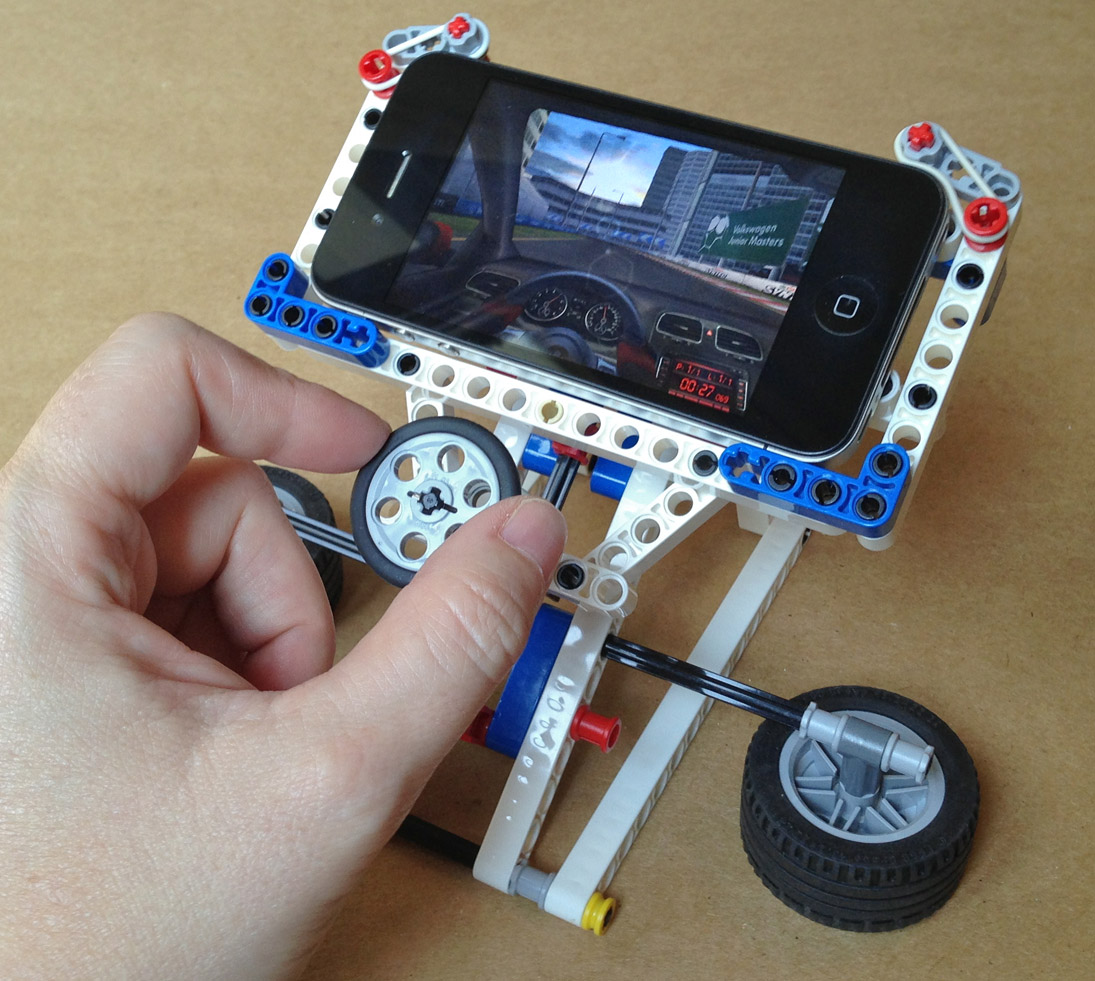Materials:
LEGO Education kit 9686, or equivalent subset of parts
Printable building instructions and parts inventory: phone_racer.pdf
Introduction:
Ok, I admit it – I’m not a huge video-gamer. I’d rather play strategic board games. And when it comes to racing, I’d rather be moving at high speed with at least two wheels spinning under me. But I am a huge fan of LEGO and I love my iPhone. So, when I see people combine the two, it gets my attention. Such was the case a few years ago, when this video was shared on The Brothers Brick LEGO blog, showing a tiny racing simulator. “What a cool idea,” I thought, “and I bet I could improve on that design.” I tried a few methods using gears, chains, and rubber bands, but in the end, settled on a simple linkage of levers held together with friction pegs. The resulting “driving” experience is smooth and satisfying. It’s just removed enough from directly holding the unit to create a novel experience.
This model can be divided into subassemblies:
Taking it further:
This project demonstrates just one way to solve a problem. I’d encourage you to experiment and see how else it can be done. For example, I built a totally different solution using only the parts from a current LEGO kit 42007. Or, try expanding or improving upon this design. My husband built an alternative base that allows the user to adjust the angle of the display and steering by turning a knob. Other ideas: Stabilization could probably be accomplished in a more elegant-looking way. And I’d love to see a nice solution for the need to tap the screen while driving. (Because the iPhone uses a capacitive touchscreen, you should be able to integrate some wire and conductive foam to trigger the effects of gas and brake pedals.)
Finally, if you’d like to read more about using LEGO TECHNIC and the basic principles behind building your own machines, I recommend taking a look at The Unofficial LEGO TECHNIC Builder’s Guide by the Polish builder known as Sariel. A good portion of the book is available for free viewing via Google Books or Amazon.com.
Have fun!


























